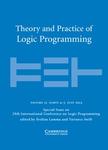版权所有:内蒙古大学图书馆 技术提供:维普资讯• 智图
内蒙古自治区呼和浩特市赛罕区大学西街235号 邮编: 010021

作者机构:Univ Texas Dallas Richardson TX 75080 USA IBM Res Yorktown Hts NY USA Univ Ray Juan Carlos Madrid Spain
出 版 物:《THEORY AND PRACTICE OF LOGIC PROGRAMMING》
年 卷 期:2024年第24卷第4期
页 面:606-627页
核心收录:
学科分类:08[工学] 0835[工学-软件工程] 0701[理学-数学] 0812[工学-计算机科学与技术(可授工学、理学学位)]
基 金:US NSF [IIS 1910131] US DoD UT Dallas Center for Applied AI and Machine Learning [TED2021-131295B-C33, PID2021-123673OB-C32]
主 题:Answer Set Programming (ASP) large language model socialbot
摘 要:The development of large language models (LLMs), such as GPT, has enabled the construction of several socialbots, like ChatGPT, that are receiving a lot of attention for their ability to simulate a human conversation. However, the conversation is not guided by a goal and is hard to control. In addition, because LLMs rely more on pattern recognition than deductive reasoning, they can give confusing answers and have difficulty integrating multiple topics into a cohesive response. These limitations often lead the LLM to deviate from the main topic to keep the conversation interesting. We propose AutoCompanion, a socialbot that uses an LLM model to translate natural language into predicates (and vice versa) and employs commonsense reasoning based on answer set programming (ASP) to hold a social conversation with a human. In particular, we rely on s(CASP), a goal-directed implementation of ASP as the backend. This paper presents the framework design and how an LLM is used to parse user messages and generate a response from the s(CASP) engine output. To validate our proposal, we describe (real) conversations in which the chatbot s goal is to keep the user entertained by talking about movies and books, and s(CASP) ensures (i) correctness of answers, (ii) coherence (and precision) during the conversation-which it dynamically regulates to achieve its specific purpose-and (iii) no deviation from the main topic.